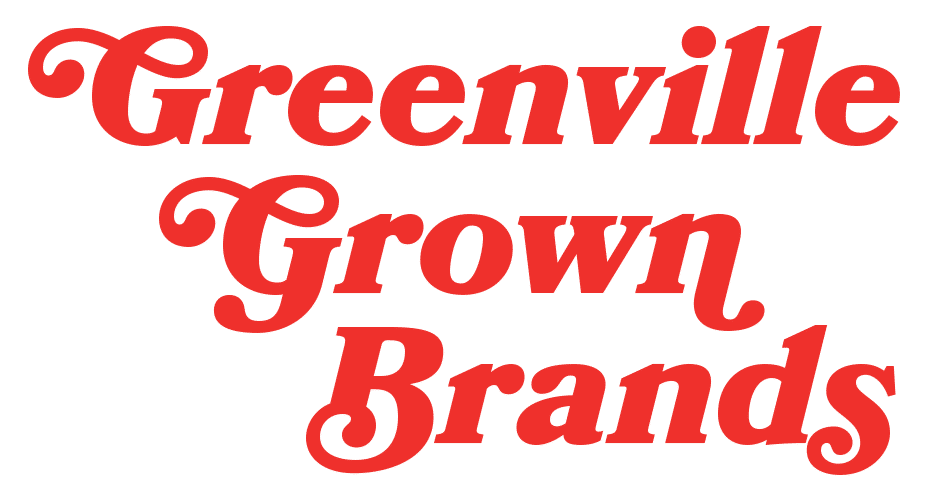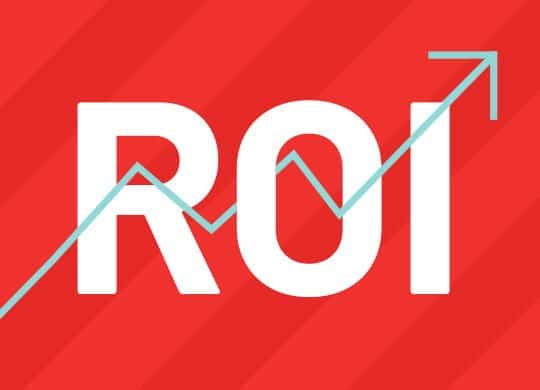Between your website analytics, multiple ad platforms, and a myriad of measurement tools available, there are literally thousands of metrics to choose from to measure the effectiveness of your website. But which metrics matter most when it comes to driving a return on your marketing investments in 2022?
Well, the answer is… it depends. It depends on your goals. It also depends on the type of website you have. Since the answer to this question is so situational, we decided to answer it three times, for three different types of websites.
- Brochure Website – This is the digital equivalent of a printed brochure about your company. It contains relevant information for customers, vendors, partners, and the public. While it probably has a contact form, it’s not optimized to drive new customers to complete a form or to sell a product.
- eCommerce Website – This type of website is designed to convert shoppers into sales. It will provide information about a catalogue of products, as well as functionality to add products to a shopping cart and complete an entire purchase directly through the website.
- Lead Generation Website – This is a website that goes beyond just informing the reader, it has also been designed to convert targeted traffic from a variety of sources into qualified leads for your sales team.
Here are the top five KPIs that you need to focus on, organized by the goals associated with the three primary website types.
Top Five Metrics for a Brochure Website
- Unique Users – One of the most important metrics for a brochure website is to be seen. Often, one of the primary goals for a brand that is building a brochure site is to increase awareness, so understanding how many unique visitors reach the website is important to understanding if the website is serving its purpose, or just gathering dust in an unused corner of the Internet.
2. Average Time on Page – It’s not enough to simply drive traffic. You also need to understand how traffic interacts with your website once they’ve reached it.
One metric that can help you determine this is “average time on page.” This metric is the average amount of time (in hours, minutes, and seconds) that all users spend on an individual page.
For more advanced digital marketers, this metric can get more complex, but for the purposes of getting an overall sense of website performance, a good place to start is the overall average of around 52 seconds. If visitors are spending at least a minute or more on a page when visiting your website, there’s a good chance that they’re interacting with the content on the page.
Keep in mind that some types of content, like embedded videos, will typically increase the average time spent on those pages.
3. Average Pages Per Session – This metric is calculated by dividing the number of pageviews by the number of sessions. This calculation provides you with the average number of pages that website visitors navigate to when visiting your website.
This metric can be tricky, because a high number of pages visited isn’t necessarily always good news. While it could mean that users are interested in learning more about your organization, it could also mean that the website is confusing to navigate and users are having a hard time finding the information they’re seeking (and thus are visiting more pages to try to find what they’re looking for).
4. Exit Rate – While this metric is similar to bounce rate, there is an important distinction. While a “bounce” is a session where only one page was visited during the session, an “exit” is any page that a user last visited before leaving your website.
There are pages that you might expect to see a high exit rate on, such as blog articles where a user entered your website seeking information, quickly found what they needed, and left with the information in hand. However, if you’re seeing a high exit rate on pages like your home page, a page describing products or services, your about page, or any page where, according to your Behavior Flow in Google Analytics, users are visiting early on in their journey, it could point to issues with your traffic quality or issues with the page that is seeing a high exit rate.
5. Form Completions – Even though the goal of this type of website isn’t necessarily to drive sales or leads, most websites will have a contact form of some type with the goal of driving outreach from visitors.
Most brands that are leveraging a brochure site will likely re-evaluate their goals at some point in the future and become more sales-focused (or at least more focused on driving tangible business results).
Tracking conversions (such as Contact Us form completions) on a brochure site might help a long-suffering marketing manager make the case that the brand’s current website isn’t accomplishing the goals of the business and an eCommerce or lead generation-focused site is needed. This metric might also serve as a useful benchmark for demonstrating the ROI of a website refresh project if a brand chooses to move forward with a website type that better aligns with their business needs.
Top Five Metrics for an eCommerce Website
- Cart Abandonment Rate – It’s not enough to drive traffic to your eCommerce website or even to get prospective buyers to add an item to their cart. Cart abandonment costs eCommerce brands $18 billion per year, so an important part of improving your ROI is reducing cart abandonment.
There are many factors that contribute to cart abandonment, and the steps you need to take to reduce it can vary from setting expectations about shipping costs early in the process to simplifying your checkout process to make it faster and more efficient for users. Generally speaking, your goal is to remove as many barriers to purchase as you can control.
2. Average Order Value – This is the average dollar value of an order placed on your eCommerce website.
This metric, when used alongside others like conversion rate can help you understand everything from how much traffic you need to drive in order to hit your revenue targets, to which products you should be promoting in order to maintain or increase your average order value, to which ad platforms you should invest more dollars in, and which you should avoid when promoting your products.
3. Conversion Rate – This metric will help you determine how effectively your website is converting traffic into sales. In the case of eCommerce, you’ll want to look at conversion rate by individual products and product categories for insights into what is and isn’t converting and where you have room for improvement.
Alternatively, it can also be very insightful to look at conversion rate by traffic source, to understand which traffic sources are leading to purchases, and which are not.
4. Lifetime Value of a Customer – This is the long-term view of the “average order value” metric, but instead of looking at only the average value of the first purchase, we’re looking at the average value of acquiring a new customer. This includes not only their initial purchase, but also their future purchases.
There are situations, such as if you’re in high-growth mode with an aggressive sales target, where it may make sense to consider the lifetime value of a customer over the “average order value” metric. This may mean that you’re breaking even or operating at a small loss in the short-term, but aware that you’ll see bigger profits in the future from those buyers who make repeat purchases.
5. ROAS and/or ROI – These metrics are very similar. Return on Ad Spend (ROAS) describes how many dollars you earn in return for every dollar spent on advertising, while Return on Investment (ROI) describes how many dollars you earn in return for every dollar spent on your marketing efforts overall, which could include expenses beyond media spend.
As an eCommerce brand, every product you sell has a margin of return. It’s important that you’re not simply counting an increase in sales as a success. Ideally, you want to see your profits increasing over time. That might mean increasing sales of higher-margin products or it might mean decreasing how much you need to spend in advertising to make a sale. By looking at these metrics overall, as well as by product and product category, you can determine whether you’re on the right track for a profitable quarter, or if you’re making sales that are breaking even or worse, losing you money in the long run.
Top Five Metrics for a Lead Generation Website
- Users – Starting from the top of your funnel, you have the “users” metric. Unlike looking at a metric like pageviews, the “users” metric gives you an understanding of how many unique visitors are reaching your website.
If you’re having trouble with converting leads, traffic volume and quality is a good place to start when searching for the cause. If your website is set up well to convert and your conversion rate is on point but you’re not getting the conversion volume you need, then you most likely need to increase the number of relevant users that are reaching your website with a targeted campaign.
2. Bounce Rate – This is a great metric for identifying potential issues. A bounce, according to Google, is a “single page session on your website.” To put that more simply, it means that someone visited your website, didn’t interact with anything, and left.
If you have a high bounce rate, then you might have a problem, but this is also true if you have an artificially low bounce rate (it probably means that something about your tracking/measurement setup is misconfigured).
Search Engine Journal provides some helpful ranges that are a good starting point for determining if your bounce rate is where it should be, though it also notes there are situations where these rates might not be as applicable.
- 25% or lower: Something is probably broken
- 26-40%: Excellent
- 41-55%: Average
- 56-70%: Higher than normal, but could make sense depending on the website
- 70% or higher: Bad and/or something is probably broken
If your bounce rate isn’t where it should be, there are a lot of potential reasons that you can explore to find the cause. These are commonly issues with either traffic quality, site content, or technical issues with your website.
3. Conversion Rate – This metric is key to understanding how effectively your website is converting traffic into leads. If you have a low conversion rate, throwing more traffic at your website to increase leads is probably not the most effective way forward. Instead, you’ll want to take a hard look at your website to understand what is causing a bad experience that is preventing potential leads from converting.
But how do you know what a good conversion rate is for your website? WordStream’s average benchmarks by industry for Google Ads and Facebook Ads are a great resource that is maintained and updated often. While you shouldn’t treat their numbers as gospel, since the industry categories are quite broad and you might be comparing yourself to a lot of businesses that aren’t very similar to yours, the numbers they provide are a great starting point for judging whether you’re in the ballpark or if there’s probably room for significant improvement.
4. Cost Per Conversion – Your cost per lead (cost per conversion) is another important KPI in your lead generation efforts. If your cost per lead is too high, then not only will you get fewer leads, but it might result in a negative ROI for your campaign. If you’re paying more for leads than the value of making a sale or paying more than the average lifetime value of a customer, then even if you have a high conversion rate and are generating a high volume of leads, you’re still losing money overall.
It’s very important that you understand how much a lead is worth to you, so that you can judge whether your cost per lead is on point, or if your current source of traffic is driving leads that are too expensive to be sustainable for your business.
5. Conversions – The final selection in our top five metrics for lead generation websites is the number of leads (conversions) you’re driving through your website. Ultimately, this is your goal, to drive lots of qualified leads that will convert into profitable sales.
When paired with the context that metrics like conversion rate and cost per conversion provide, you can understand whether you’re driving the right amount of leads for your business, as well as what steps you should consider if you want to increase the volume of qualified leads your website is generating.
While we’re suggesting that you monitor these top five metrics, you shouldn’t ignore other metrics. You’ll want to monitor other metrics to have a holistic view of performance and, more importantly, what is driving performance and what you can do to continue optimizing it over time.
As you become more sophisticated in your approach to monitoring KPIs and extracting insights from your website metrics, you may also want to layer on additional tools, such as heat mapping, session recording, A/B testing platforms, and other more advanced tools that allow you to gain greater insight into how users are engaging with your website, and how you can improve their experience and your marketing results.
At FUEL, we stay on top of metrics for our clients and work year-round to update and improve their websites to constantly move the needle forward. Let us know how we can help improve your website metrics.








